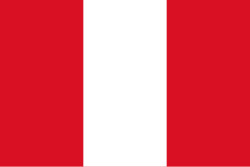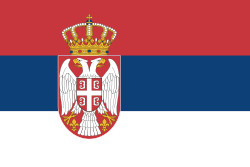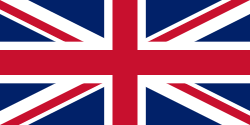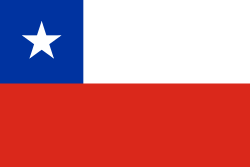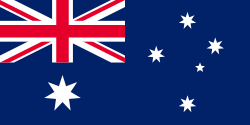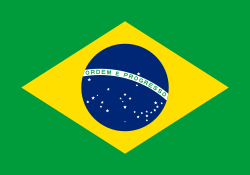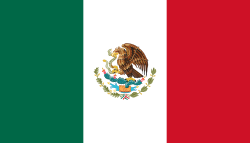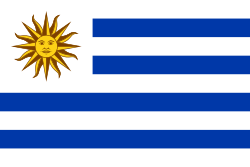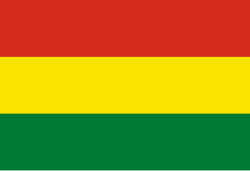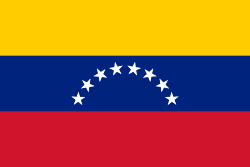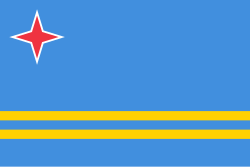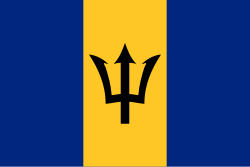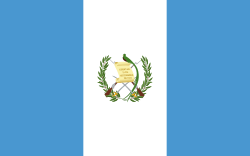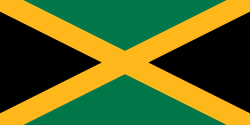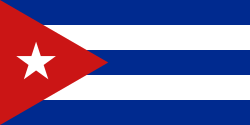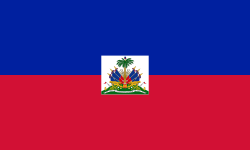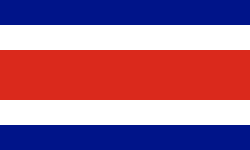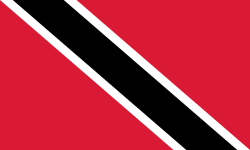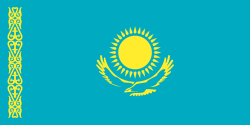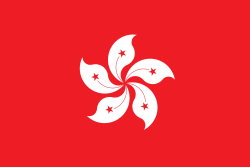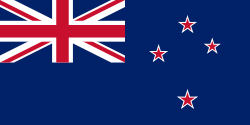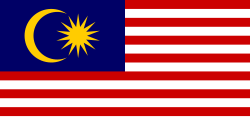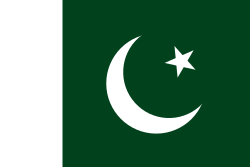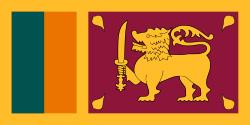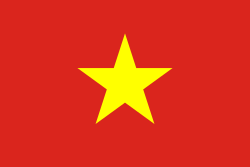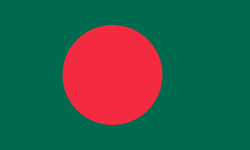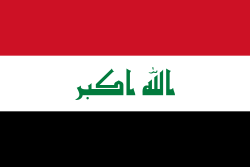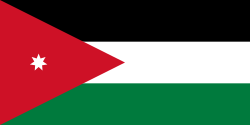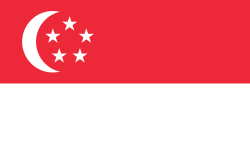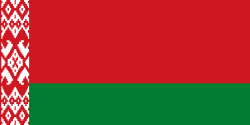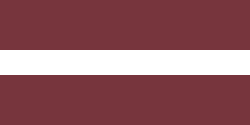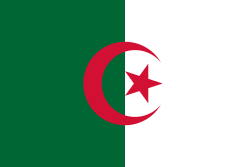Davis Cup 2008
Davis Cup 2008 byl 97. ročníkem této nejdůležitější týmové soutěže mužů. 16 týmů se účastnilo bojů ve Světové skupině a více než sto dalších hrálo v nižších skupinách.
První zápasy se odehrály 8. až 10. února. Poslední finálový zápas se konal 21. až 23. listopadu v Argentině, která v domácím prostředí podlehla Španělsku 1:3. Pro Španělsko to byl třetí daviscupový titul.
Světová skupina 2008
| Účastníci Světové skupiny 2008 | |||
Argentina | Belgie | Česká republika | Francie |
|---|---|---|---|
Izrael | Jižní Korea | Německo | Peru |
Rakousko | Rumunsko | Rusko | Srbsko |
Španělsko | Švédsko | USA | Velká Británie |
Pavouk
| 1. Kolo 8.– 10. února | Čtvrtfinále 11.– 13. dubna | Semifinále 19.– 21. září | Finále 21.– 23. listopadu | |||||||||||||||
| 1 | | 3 | ||||||||||||||||
| | 2 | |||||||||||||||||
| 1 | | 3 | ||||||||||||||||
| | 2 | |||||||||||||||||
| 8 | | 2 | ||||||||||||||||
| | 3 | |||||||||||||||||
| 1 | | 2 | ||||||||||||||||
| 3 | | 3 | ||||||||||||||||
| 3 | | 4 | ||||||||||||||||
| | 1 | |||||||||||||||||
| 3 | | 4 | ||||||||||||||||
| 6 | | 1 | ||||||||||||||||
| 6 | | 3 | ||||||||||||||||
| | 2 | |||||||||||||||||
| 3 | | 1 | ||||||||||||||||
| 5 | | 3 | ||||||||||||||||
| | 2 | |||||||||||||||||
| 4 | | 3 | ||||||||||||||||
| 4 | | 1 | ||||||||||||||||
| 5 | | 4 | ||||||||||||||||
| | 0 | |||||||||||||||||
| 5 | | 5 | ||||||||||||||||
| 5 | | 4 | ||||||||||||||||
| 2 | | 1 | ||||||||||||||||
| | 0 | |||||||||||||||||
| 7 | | 5 | ||||||||||||||||
| 7 | | 1 | ||||||||||||||||
| 2 | | 4 | ||||||||||||||||
| | 1 | |||||||||||||||||
| 2 | | 4 | ||||||||||||||||
Finále
| Argentina | 1 : | 3 | Španělsko | |||||||||||||||||||||||||||||||||||||||||||||||||||||||||||||||||||||||||||||||||||||||||||||||||||||
|---|---|---|---|---|---|---|---|---|---|---|---|---|---|---|---|---|---|---|---|---|---|---|---|---|---|---|---|---|---|---|---|---|---|---|---|---|---|---|---|---|---|---|---|---|---|---|---|---|---|---|---|---|---|---|---|---|---|---|---|---|---|---|---|---|---|---|---|---|---|---|---|---|---|---|---|---|---|---|---|---|---|---|---|---|---|---|---|---|---|---|---|---|---|---|---|---|---|---|---|---|---|---|---|---|
| Estadio Polideportivo, Mar del Plata, Argentina 21. listopadu - 23. listopadu 2008 tvrdý (v hale) | ||||||||||||||||||||||||||||||||||||||||||||||||||||||||||||||||||||||||||||||||||||||||||||||||||||||||
| ||||||||||||||||||||||||||||||||||||||||||||||||||||||||||||||||||||||||||||||||||||||||||||||||||||||||
Světová skupina – Baráž
- Datum: 19.–21. září 2008
Osm týmů, které prohrály v 1. kole Světové skupiny se střetlo s osmi týmy, které do baráže postoupily z prvních skupin. Nasazení týmů bylo dáno podle žebříčku Davis Cupu ze 14. dubna 2008.
| Místo | Povrch | Vítězný tým | Výsledek | Poražený tým |
|---|---|---|---|---|
| Antofagasta, Chile | antuka | 3–2 | ||
| Wimbledon, V. Británie | tráva | 3–2 | ||
| Lausanne, Švýcarsko | tvrdý(h) | 4–1 | ||
| Zadar, Chorvatsko | tvrdý(h) | 4–1 | ||
| Ramat HaSharon, Izrael | tvrdý | 4–1 | ||
| Apeldoorn, Nizozemsko | antuka(h) | 3–2 | ||
| Bukurešť, Rumunsko | antuka | 4–1 | ||
| Bratislava, Slovensko | tvrdý(h) | 4–1 |
- Chile, Chorvatsko, Nizozemsko a Švýcarsko postoupily do Světové skupiny pro rok 2009.
- Rakousko, Izrael, Rumunsko a Srbsko zůstávají ve Světové skupině pro rok 2009.
- Austrálie, Brazílie, Indie, a Slovensko zůstávají v 1. skupině pro rok 2009.
- Belgie, Velká Británie, Peru a Jižní Korea sestupují do 1. skupiny pro rok 2009.
Americká zóna
1. skupina
 Brazílie – postup do baráže o Světovou skupinu
Brazílie – postup do baráže o Světovou skupinu Chile – postup do baráže o Světovou skupinu
Chile – postup do baráže o Světovou skupinu Kanada
Kanada Kolumbie
Kolumbie Mexiko – sestup do 2. skupiny pro rok 2009
Mexiko – sestup do 2. skupiny pro rok 2009 Uruguay
Uruguay
2. skupina
 Bahamy
Bahamy Bolívie – sestup do 3. skupiny pro rok 2009
Bolívie – sestup do 3. skupiny pro rok 2009 Dominikánská republika
Dominikánská republika Ekvádor – postup do 1. skupiny pro rok 2009
Ekvádor – postup do 1. skupiny pro rok 2009 Nizozemské Antily
Nizozemské Antily Paraguay
Paraguay Salvador – sestup do 3. skupiny pro rok 2009
Salvador – sestup do 3. skupiny pro rok 2009 Venezuela
Venezuela
3. skupina
 Aruba – sestup do 4. skupiny pro rok 2009
Aruba – sestup do 4. skupiny pro rok 2009 Barbados
Barbados Guatemala – postup do 2. skupiny pro rok 2009
Guatemala – postup do 2. skupiny pro rok 2009 Honduras
Honduras Jamajka – postup do 2. skupiny pro rok 2009
Jamajka – postup do 2. skupiny pro rok 2009 Panama – sestup do 4. skupiny pro rok 2009
Panama – sestup do 4. skupiny pro rok 2009 Portoriko
Portoriko- Odstoupení:
 Kuba
Kuba
4. skupina
 Americké Panenské ostrovy
Americké Panenské ostrovy Bermudy
Bermudy Haiti – postup do 3. skupiny pro rok 2009
Haiti – postup do 3. skupiny pro rok 2009 Kostarika – postup do 3. skupiny pro rok 2009
Kostarika – postup do 3. skupiny pro rok 2009- Odstoupení:
 Trinidad a Tobago
Trinidad a Tobago
Zóna Asie a Oceánie
1. skupina
 Austrálie – postup do baráže o Světovou skupinu
Austrálie – postup do baráže o Světovou skupinu Filipíny – sestup do 2. skupiny pro rok 2009
Filipíny – sestup do 2. skupiny pro rok 2009 Indie – postup do baráže o Světovou skupinu
Indie – postup do baráže o Světovou skupinu Japonsko
Japonsko Kazachstán
Kazachstán Thajsko
Thajsko Tchaj-wan
Tchaj-wan Uzbekistán
Uzbekistán
2. skupina
 Čína – postup do 1. skupiny pro rok 2009
Čína – postup do 1. skupiny pro rok 2009 Hongkong
Hongkong Indonésie
Indonésie Kuvajt
Kuvajt Libanon – sestup do 3. skupiny pro rok 2009
Libanon – sestup do 3. skupiny pro rok 2009 Nový Zéland
Nový Zéland- Oceánie – sestup do 3. skupiny pro rok 2009
 Omán
Omán
3. skupina
 Írán
Írán Malajsie – postup do 2. skupiny pro rok 2009
Malajsie – postup do 2. skupiny pro rok 2009 Pákistán – postup do 2. skupiny pro rok 2009
Pákistán – postup do 2. skupiny pro rok 2009 Spojené arabské emiráty – sestup do 4. skupiny pro rok 2009
Spojené arabské emiráty – sestup do 4. skupiny pro rok 2009 Srí Lanka
Srí Lanka Sýrie
Sýrie Tádžikistán
Tádžikistán Vietnam – sestup do 4. skupiny pro rok 2009
Vietnam – sestup do 4. skupiny pro rok 2009
4. skupina
 Bahrajn
Bahrajn Bangladéš
Bangladéš Brunej
Brunej Irák
Irák Jordánsko
Jordánsko Katar
Katar Mongolsko
Mongolsko Myanmar
Myanmar Saúdská Arábie – postup do 3. skupiny pro rok 2009
Saúdská Arábie – postup do 3. skupiny pro rok 2009 Singapur – postup do 3. skupiny pro rok 2009
Singapur – postup do 3. skupiny pro rok 2009 Turkmenistán
Turkmenistán
Zóna Evropy a Afriky
1. skupina
 Bělorusko
Bělorusko Gruzie – sestup do 2. skupiny pro rok 2009
Gruzie – sestup do 2. skupiny pro rok 2009 Chorvatsko – postup do baráže o Světovou skupinu
Chorvatsko – postup do baráže o Světovou skupinu Itálie
Itálie Lotyšsko – sestup do 2. skupiny pro rok 2009
Lotyšsko – sestup do 2. skupiny pro rok 2009 Makedonie
Makedonie Nizozemsko – postup do baráže o Světovou skupinu
Nizozemsko – postup do baráže o Světovou skupinu Polsko
Polsko Slovensko – postup do baráže o Světovou skupinu
Slovensko – postup do baráže o Světovou skupinu Švýcarsko – postup do baráže o Světovou skupinu
Švýcarsko – postup do baráže o Světovou skupinu
2. skupina
 Alžírsko
Alžírsko Dánsko
Dánsko Egypt
Egypt Finsko
Finsko Irsko
Irsko Jihoafrická republika – postup do 1. skupiny pro rok 2009
Jihoafrická republika – postup do 1. skupiny pro rok 2009 Kypr
Kypr Lucembursko – sestup do 3. skupiny pro rok 2009
Lucembursko – sestup do 3. skupiny pro rok 2009 Maďarsko
Maďarsko Maroko – sestup do 3. skupiny pro rok 2009
Maroko – sestup do 3. skupiny pro rok 2009 Monako
Monako Portugalsko
Portugalsko Řecko – sestup do 3. skupiny pro rok 2009
Řecko – sestup do 3. skupiny pro rok 2009 Slovinsko
Slovinsko Tunisko – sestup do 3. skupiny pro rok 2009
Tunisko – sestup do 3. skupiny pro rok 2009 Ukrajina – postup do 1. skupiny pro rok 2009
Ukrajina – postup do 1. skupiny pro rok 2009
3. skupina
Plovdiv, Bulharsko
 Bulharsko – postup do 2. skupiny pro rok 2009
Bulharsko – postup do 2. skupiny pro rok 2009 Côte d'Ivoire – sestup do 4. skupiny pro rok 2009
Côte d'Ivoire – sestup do 4. skupiny pro rok 2009 Černá Hora – postup do 2. skupiny pro rok 2009
Černá Hora – postup do 2. skupiny pro rok 2009 Madagaskar
Madagaskar Turecko
Turecko Zimbabwe – sestup do 4. skupiny pro rok 2009
Zimbabwe – sestup do 4. skupiny pro rok 2009- Odstoupení:
 Botswana a
Botswana a  Nigérie
Nigérie
Jerevan, Arménie
 Andorra
Andorra Arménie – sestup do 4. skupiny pro rok 2009
Arménie – sestup do 4. skupiny pro rok 2009 Bosna a Hercegovina
Bosna a Hercegovina Estonsko
Estonsko Ghana – sestup do 4. skupiny pro rok 2009
Ghana – sestup do 4. skupiny pro rok 2009 Litva – postup do 2. skupiny pro rok 2009
Litva – postup do 2. skupiny pro rok 2009 Moldávie – postup do 2. skupiny pro rok 2009
Moldávie – postup do 2. skupiny pro rok 2009 Norsko
Norsko
4. skupina
 Island – postup do 3. skupiny pro rok 2009
Island – postup do 3. skupiny pro rok 2009 Namibie – postup do 3. skupiny pro rok 2009
Namibie – postup do 3. skupiny pro rok 2009 Rwanda – postup do 3. skupiny pro rok 2009
Rwanda – postup do 3. skupiny pro rok 2009 San Marino – postup do 3. skupiny pro rok 2009
San Marino – postup do 3. skupiny pro rok 2009- Odstoupení:
 Libye,
Libye,  Malta a
Malta a  Mauritius
Mauritius
Externí odkazy
 Obrázky, zvuky či videa k tématu Davis Cup 2008 na Wikimedia Commons
Obrázky, zvuky či videa k tématu Davis Cup 2008 na Wikimedia Commons - Oficiální stránky Davis Cupu
Média použitá na této stránce
This is the national flag of Belgium, according to the Official Guide to Belgian Protocol. It has a 13:15 aspect ratio, though it is rarely seen in this ratio.
Its colours are defined as Pantone black, Pantone yellow 115, and Pantone red 032; also given as CMYK 0,0,0,100; 0,8.5,79,0; and 0,94,87,0.Vlajka České republiky. Podoba státní vlajky České republiky je definována zákonem České národní rady č. 3/1993 Sb., o státních symbolech České republiky, přijatým 17. prosince 1992 a který nabyl účinnosti 1. ledna 1993, kdy rozdělením České a Slovenské Federativní republiky vznikla samostatná Česká republika. Vlajka je popsána v § 4 takto: „Státní vlajka České republiky se skládá z horního pruhu bílého a dolního pruhu červeného, mezi něž je vsunut žerďový modrý klín do poloviny délky vlajky. Poměr šířky k její délce je 2 : 3.“
Při zobrazení tohoto souboru lze snadno přidat orámování
Flag of Australia, when congruence with this colour chart is required (i.e. when a "less bright" version is needed).
See Flag of Australia.svg for main file information.Flag of Canada introduced in 1965, using Pantone colors. This design replaced the Canadian Red Ensign design.
| Flag of Bolivia* | |
|---|---|
| country | Template:I18n/Republic of Bolivia |
| used by | Bolivia |
| from | 1851 |
| until | Present |
| created by | Government of Bolivia |
| format | 15:22 |
| shape | rectangular |
| colours | červená, žlutá, zelená
flag has 3 horizontal stripes |
| other characteristics | A horizontal tricolor of red, yellow and green. |
The flag of the Dominican Republic has a centered white cross that extends to the edges. This emblem is similar to the flag design and shows a bible, a cross of gold and 6 Dominican flags. There are branches of olive and palm around the shield and above on the ribbon is the motto "Dios,Patria!, Libertad" ("God, Country, Freedom") and to amiable freedom. The blue is said to stand for liberty, red for the fire and blood of the independence struggle and the white cross symbolized that God has not forgotten his people. "Republica Dominicana". The Dominican flag was designed by Juan Pablo Duarte, father of the national Independence of Dominican Republic. The first dominican flag was sewn by a young lady named Concepción Bona, who lived across the street of El Baluarte, monument where the patriots gathered to fight for the independence, the night of February 27th, 1844. Concepción Bona was helped by her first cousin María de Jesús Pina.
The flag of the Dominican Republic has a centered white cross that extends to the edges. This emblem is similar to the flag design and shows a bible, a cross of gold and 6 Dominican flags. There are branches of olive and palm around the shield and above on the ribbon is the motto "Dios,Patria!, Libertad" ("God, Country, Freedom") and to amiable freedom. The blue is said to stand for liberty, red for the fire and blood of the independence struggle and the white cross symbolized that God has not forgotten his people. "Republica Dominicana". The Dominican flag was designed by Juan Pablo Duarte, father of the national Independence of Dominican Republic. The first dominican flag was sewn by a young lady named Concepción Bona, who lived across the street of El Baluarte, monument where the patriots gathered to fight for the independence, the night of February 27th, 1844. Concepción Bona was helped by her first cousin María de Jesús Pina.
The flag of Aruba
Note: The color selected is «turquoise blue» (the color mentioned in the decree), as defined by Pantone.
Flag of Jamaica. “The sunshine, the land is green, and the people are strong and bold” is the symbolism of the colours of the flag. GOLD represents the natural wealth and beauty of sunlight; GREEN represents hope and agricultural resources; BLACK represents the strength and creativity of the people. The original symbolism, however, was "Hardships there are, but the land is green, and the sun shineth", where BLACK represented the hardships being faced.
The national and official state flag of Haiti; arms obtained from File:Coat of arms of Haiti.svg. The civil flag can be found at here.
The national flag of Kingdom of Thailand; there are total of 3 colours:
- Red represents the blood spilt to protect Thailand’s independence and often more simply described as representing the nation.
- White represents the religion of Buddhism, the predominant religion of the nation
- Blue represents the monarchy of the nation, which is recognised as the centre of Thai hearts.
bendera Indonesia
Flag of Iran. The tricolor flag was introduced in 1906, but after the Islamic Revolution of 1979 the Arabic words 'Allahu akbar' ('God is great'), written in the Kufic script of the Qur'an and repeated 22 times, were added to the red and green strips where they border the white central strip and in the middle is the emblem of Iran (which is a stylized Persian alphabet of the Arabic word Allah ("God")).
The official ISIRI standard (translation at FotW) gives two slightly different methods of construction for the flag: a compass-and-straightedge construction used for File:Flag of Iran (official).svg, and a "simplified" construction sheet with rational numbers used for this file.
Georgian flag in Pantone MS.
Finská vlajka
Zelený pruh má znázorňovat většinové katolické obyvatelsto Irska, oranžový pruh reprezentuje protestantskou menšinu a bílý pruh uprostřed znázorňuje mír a harmonii mezi nimi.
Used color: National flag | South African Government and Pantone Color Picker
| zelená | rendered as RGB 0 119 73 | Pantone 3415 C |
| žlutá | rendered as RGB 255 184 28 | Pantone 1235 C |
| červená | rendered as RGB 224 60 49 | Pantone 179 C |
| modrá | rendered as RGB 0 20 137 | Pantone Reflex Blue C |
| bílá | rendered as RGB 255 255 255 | |
| černá | rendered as RGB 0 0 0 |
Flag of Portugal, created by Columbano Bordalo Pinheiro (1857-1929), officially adopted by Portuguese government in June 30th 1911 (in use since about November 1910).
Flag of the Ivory Coast, written by Jon Harald Søby, modified by Zscout370. The colors match to what is reported at http://fotw.vexillum.com/flags/ci.html.
The Flag of Iceland.
- Horizontal aspect ratio: 7:1:2:1:14;
- Vertical aspect ratio: 7:1:2:1:7.
Flag of Namibia
Flag of Rwanda. The flag ratio is 2:3 with the stripes being 2:1:1. Colors are the following officially: Pantone 299 C 2X (blue), RAL 6029 (green), RAL 1023 (yellow) and RAL 1003 (golden yellow). (As of 03/08/2010, the only color used is the Pantone 299 C, which is from here. The rest of the colors are RAL shades from here.)
Při zobrazení tohoto souboru lze snadno přidat orámování







